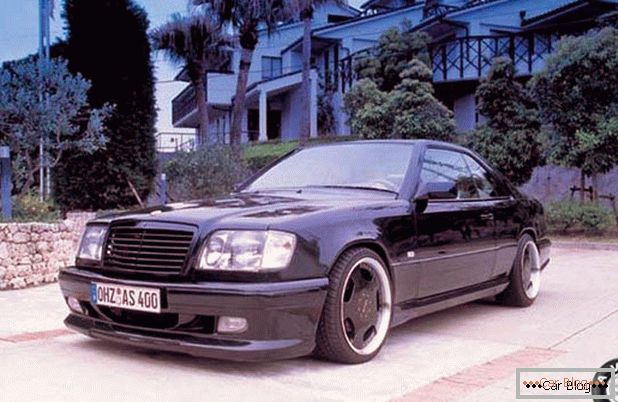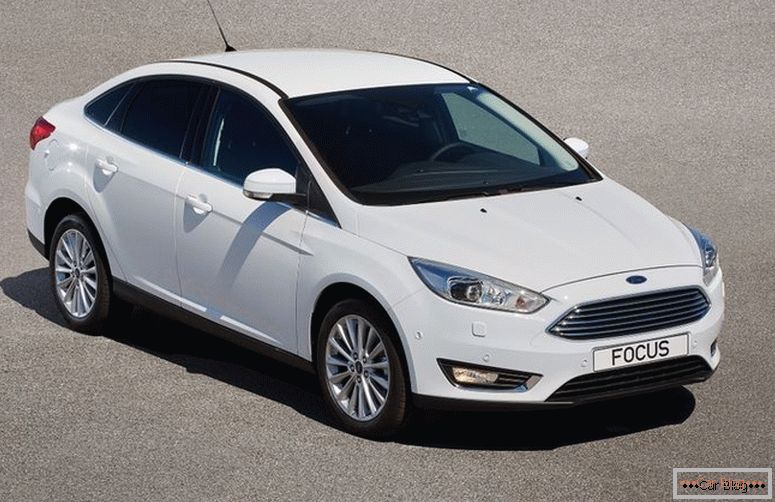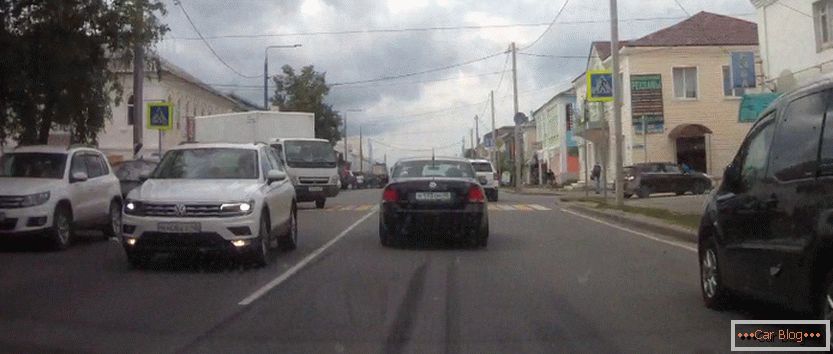The practice of building toll routes came to our country from abroad. It has both positive and negative characteristics. One example of this phenomenon is the toll road Moscow - St. Petersburg. It is assumed that it will help during the football world championship.
The main tasks that are assigned to the transport artery are that it must relieve the flow from the federal highway “Russia” and ensure high-quality and high-speed transport communication between the two capitals. The length of the path is about seven hundred kilometers.
Content
- 1 History of development of the M-11
- 2 Minuses of the road M-10
- 3 Financial side
- 4 Basic path characteristics
- 5 Hydrotechnics and infrastructure
- 6 Environmental component
- 7 Complete itinerary
- 8 The issue of paid and free travel. Billing
The history of the development of M-11
Construction of the Moscow-Peter highway should eventually lead to a reduction in the load on the M-10, which operates with a fourfold excess load. It will also ensure the maximum speed of passage of different sections of the path, because the mode will be permissible in certain segments up to 150 km / h.
Back in ancient times, the M-10 was called the Petersburg Truck. It was laid from the beginning of the XVIII century, when the city was laid on the Neva. Since that time there have been many reconstructions and upgrades associated with this road.
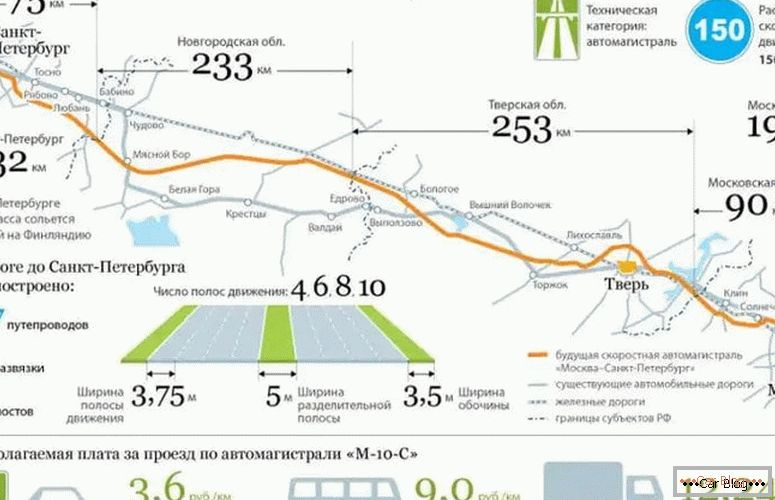
In the 21st century, the government adopted a plan for the construction of a modern road between major Russian cities. This would reduce the load on the old way, which was very expensive to repair. In the process of construction uses modern technology relating to the construction and design.
Speeds vary significantly:
- three centuries ago, citizens traveled from Moscow to St. Petersburg twenty days on a log cabin;
- the current road makes it possible to overcome such a distance on its own transport in 20 hours;
- It is assumed that the new scheme of the M11 will allow covering the same distance in 5-7 hours under favorable conditions.
You need to know that the built expressway between the two capitals will be after the end of the fastest motorway on the European continent.
Minuses of the road M-10
The current situation of "Leningrad", so called the route "Russia" among the people, leaves much to be desired. According to the standards, it allows it to reach speeds of up to 90 km / h for almost its entire length, which is 697 km. Its width varies on average between 8–11 m and includes 2–3 bands.
In reality, in certain areas, it is physically impossible to dial 30, and sometimes even 10 km / h due to the quality of the canvas and the abundance of holes that the road services do not have time to patch. Problems are arranged and due to the installed traffic lights, for example, in Vyshny Volochyok. When two-lane traffic to overcome this "bottleneck" in bad weather takes up to 5-6 hours.
The capacity of the Leningrad highway is limited to 40 thousand cars. In reality, she has to withstand traffic up to 170 thousand cars every day. However, no one is going to dismantle the M10. Drivers will independently make decisions whether to use paid sections of the road or move in the old manner on a free highway.
Financial side
When the M11 is completed, it will become unique not only due to technological features, but also due to the fact that it is the first facility in the Russian Federation based on public-private partnership. This means that the contribution was made not only from the state budget, but also from private investors. In this case, the income will also be charged in favor of both parties.
See also: Which gasoline is better to pour: 92 or 95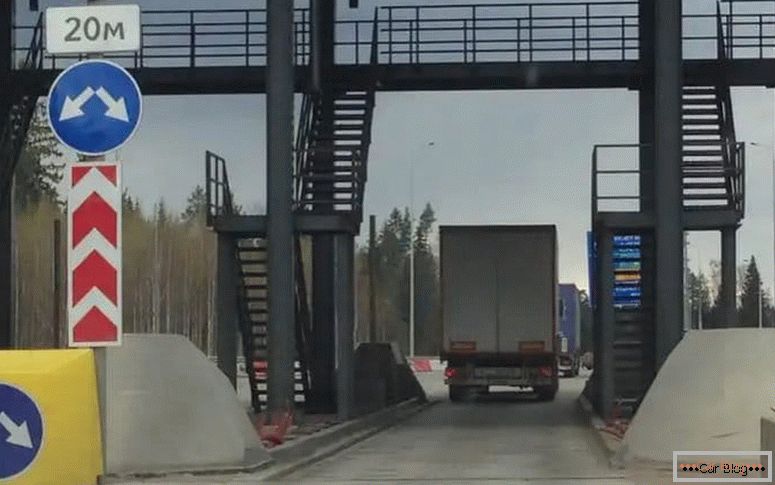
Often, citizens are interested in the estimated cost of the project. The voiced figures fluctuate about one and a half hundred billion rubles. The path is divided into certain sections, one of which is the Khimki-Solnechnogorsk segment, and also Solnechnogorsk-Klin, which in total exceeds 130 km. The concessionaire’s contribution depends on prior agreement.
The head segment costs 60 billion. This amount includes 23 billion of budget funds. The bypass of Vyshny Volochka demanded 46 billion dollars in capital investments, and the access to the northern capital costs almost 38 billion. In this situation, the government is investing 3/4, and investors 1/4 of the cost.
Basic path characteristics
According to the plan, the path should include 684 km of quality coverage between cities. The distance is divided between the areas:
- Moskovskaya - 90 km;
- Tverskaya - 253 km;
- Novgorodskaya - 233 km;
- Leningradskaya - 75 km.
Perhaps total funding will exceed the planned budget of 153 billion rubles. The maximum speed limit will be 150 km / h.
The width of each strip is 375 cm, and each section assumes a different number of them. When approaching Sheremetyevo Airport, their number should be at least 10 pcs. total in both directions. If the path reaches Zelenogorsk, then 4 lines lead to it, and 4 lanes lead from it, only 8 pcs. Further, the M11 Moscow - St. Petersburg expressway on the map will be four- or six-lane, right up to St. Petersburg, where it will expand to 5 + 5 lanes as it approaches.
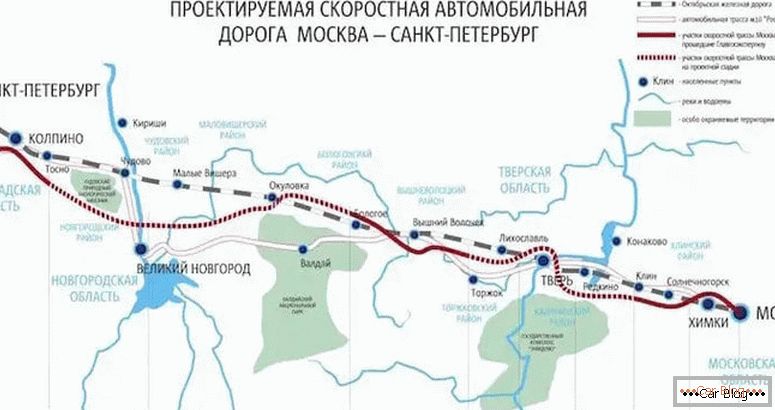
For the safety of drivers will install a separating barrier barrier of concrete. Its width reaches 5–6 m in different areas.
Hydrotechnics and infrastructure
The cost of the toll road Moscow - St. Petersburg will be paid exclusively in the distance traveled. To ensure the accuracy of the account will help special equipment. Checkpoints will be equipped for this. Possible congestion can occur at the initial stages due to poorly regulated payment. In the future, everything is normalized.
A curb will be formed along the entire path, the width of which should be at least 3.5 m. Planting of green spaces (grass) will help minimize the occurrence of landslides. After a couple of weeks after sowing, it will form a quality coating in the form of a thick lawn.
It is assumed that throughout the route good lighting will be installed and the road infrastructure will be formed, which traditionally includes gas stations, cafes, toilets, sewage treatment plants, sound protection panels, etc. for such projects. The developers have plans to build 325 artificial objects, including including a hundred bridges, tracking stations, overpasses, communication points, etc.
There are almost four dozen transport interchanges on the new toll road. They are erected at different levels, with the height of the most massive reaches 35 m.
Environmental component
The entire length from Moscow to St. Petersburg provides for compliance with environmental standards during construction and further operation. Sand filters are installed for each treatment plant, thus it is possible to minimize or completely eliminate the penetration into the natural system of chemical harmful components that are necessarily present during the operation of vehicles.
Save the entire length of the streams is possible thanks to the laying of pipelines. Migration is also possible for wild animals, such as boars or elks. In this situation, the builders assemble wide animal passes. Although few people understand how to train animals to use such methods of movement.
See also: The coolest car in the worldThe disadvantage is the partial felling of the Khimki forest, which took place during construction. I remember the action, which went to the locals. To restore the green zone, but in another district, 12 billion rubles were allocated from the budget. for the purchase and planting of seedlings.
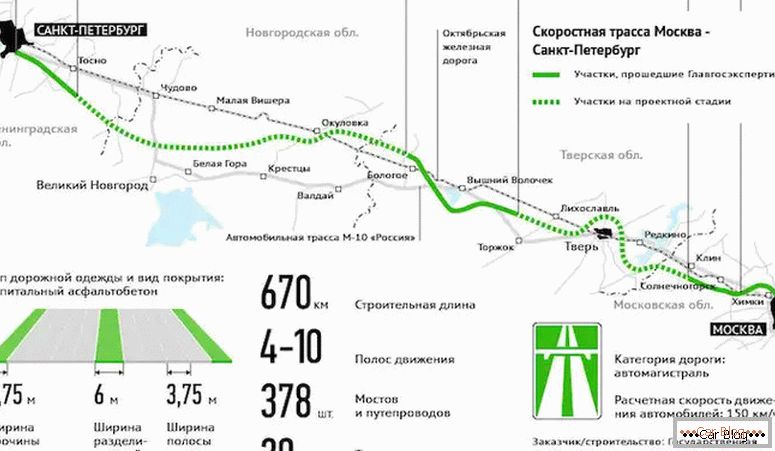
Another stumbling block was the section passing through the Zavidovo protected area. The dispute was resolved by allocating compensation in the form of a new land plot. However, the issue of the work of the Pulkovo Observatory, which is close to the new highway, is not fully resolved. Possible noise and dust can complicate her work.
Complete itinerary
M11 starts from the capital at the intersection of the Moscow Ring Road and Brusinovskaya interchange. Then we go around Khimki and the town of Vashutino. After crossing the International Highway, which leads to Sheremetyevo Airport, Sheremetyevskoe Highway and access to Zelenograd from the A-107 highway. The way to Solnechnogorsk is not getting, but immediately goes to the parallel to the highway M-10. This site is already used by motorists at full strength.
There are five intersections with the old Leningrad road:
- before entering Solnechnogorsk, 58 km;
- to Tver 149 km;
- after driving Torzhok to 258 km;
- near Hotilovo after Vyshny Volochka for 334 km;
- for Veliky Novgorod on 543 km.
In cities such as Tver, Klin, Valdai and Veliky Novgorod, the path will not be included. However, the project provides for mandatory congresses, allowing, if necessary, to visit these localities.
The issue of paid and free travel. Billing
It is assumed that the paid part will be the route for 606 km. It was decided to make the gap between Klin and Mednoy free. It is located in the range of 15–58 km. Many segments have already been launched on a paid basis, in particular, bypass of the Higher Volochyok. Approximate opening is planned for 2018.
Approximate payment drivers must get off in the range of 2–3,62 rubles. for 1 km. However, for the Tver and Novgorod regions, while the limit was set at 1 rub. per km. Even the president of the country paid attention to the high cost of individual plots, because in reality it exceeds the standards.
First, the price tag soared to Solnechnogorka took up to 500 rubles, and to Zelenogorsk up to 300 rubles. Later they began to differentiate transport, as many boycotted such an approach to drivers. Differentiation took place according to the daily rate, class of car and days of the week. There are also 30-fold subscriptions and benefits for transponder owners.
Now used categories of cars with different billing by groups:
- motorcycles, cars, small buses or trucks;
- medium-sized cars with a height of up to 2.6 m;
- dimensional two-axle transport, the height of which is more than 2.6 m;
- tall cars with three or more axles.
A more detailed description can be found on the NWCC site. It is worth paying attention to, as the pricing may vary.

